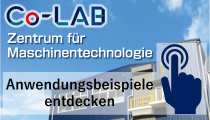Horizontal Grinding Mill Overflow Type, Grate-discharge Type, and Compartment Type Ball Mill
Division for this product Plant Engineering and Machinery Division

Summary
The Ball Mill is designed to grind materials by turning the cylindrical shell with grinding medium (e.g. steel balls, cylpeb, and pebbles) put in the shell, and has a simple structure and ease of handling. Furthermore, The Ball Mill of a large capacity has been available to a very extensive range of applications in both dry and wet processing.
Features
- Overflow Type
The overflow type of Ball Mill is designed to overflow and discharge materials from the trunnion on the outlet side. By combining it with a mechanical classifier or wet-processing cyclone, you are able to extensively use this type for grinding in closed circuit or for special applications such as re-grinding in open circuit. Generally, it is best suited to fine-grind materials up to the particle sizes ranging from 150 to 200 mesh. - Grate-discharge Type
The grate-discharge type of Ball Mill has a grate at the outlet of the shell and causes less excessive grinding, compared to the overflow type. Therefore, generally, it is best suited to grind materials up to the particle sizes ranging from 60 to 100 mesh. - Compartment type
The compartment type of Ball Mill has a longer shell, inside of which is comparted into 2 to 3 chambers with grates and is best suited to produce products grinding from coarse particles of some 25 mm to fine particles of some 200 mesh. - Other batch types of Ball Mill are best suited to produce ultra fine particles in particular.
Use
- Mining Industry : Used to grind various kinds of ores.
- Ceramic Industry : Used to finish and grind various kinds of raw materials and cement.
- Smelting Industry : Used to grind various kinds of slag.
- Power generation : Used to grind coal for combustion use.
- Chemical Industry : Used to grind coke, ilmenite, and others.
Construction
Overflow Type
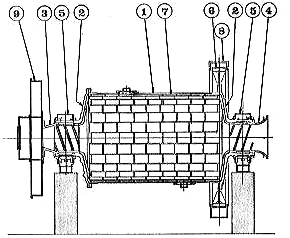 |
1) Shell 2) Trunnion 3) Trunnion cylindrical liner on inlet side 4) Trunnion cylindrical liner on outlet side 5) Trunnion bearing 6) Drum gear 7) Liner 8) Gear case 9) Combination feeder |
Grate-discharge Type
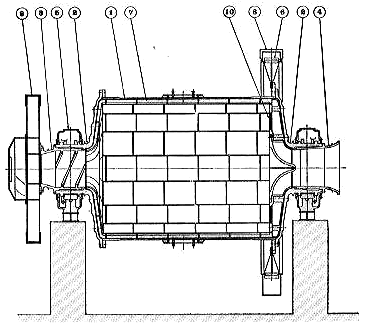 |
1) Shell 2) Trunnion 3) Trunnion cylindrical liner on inlet side 4) Trunnion cylindrical liner on outlet side 5) Trunnion bearing 6) Drum gear 7) Liner 8) Gear case 9) Combination feeder 10) Grate |
Compartment Type
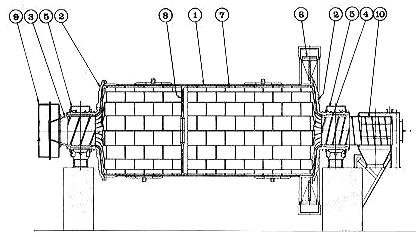 |
1) Shell 2) Trunnion 3) Trunnion cylindrical liner on inlet side 4) Trunnion cylindrical liner on outlet side 5) Trunnion bearing 6) Drum gear 7) Liner 8) Gear case 9) Drum feeder 10) Trommel screen |
Specifications
| Size | Inside dia. Length of shell (mm) | Ball charging amount (tons) | Mill revolution (min-1) | Power consumption (kW) | Motor output (kW) | Capacity (t/h) | |
|---|---|---|---|---|---|---|---|
| A | B | ||||||
| 1212 1515 |
1200×1200 1500×1500 |
2.05 4.15 |
32.0 29.0 |
16.5 35.8 |
18.5 37 |
1.5 3.5 |
1.3 3.1 |
| 1818 2121 |
1800×1800 2100×2100 |
7.4 11.7 |
25.3 23.0 |
65.3 106 |
75 110 |
6.6 11.0 |
5.8 9.6 |
| 2424 2430 |
2400×2400 2400×3000 |
17.6 22.0 |
21.4 21.4 |
167 209 |
190 220 |
18.0 22.4 |
15.8 19.6 |
| 2727 2733 |
2700×2700 2700×3300 |
25.4 31.0 |
20.1 20.1 |
250 306 |
260 340 |
27.5 33.7 |
24.1 29.6 |
| 3030 3036 |
3000×3000 3000×3600 |
35.0 42.0 |
18.8 18.8 |
350 420 |
375 450 |
39.5 47.3 |
34.6 41.5 |
| 3236 3242 |
3200×3600 3200×4200 |
48.0 56.0 |
18.0 18.0 |
484 565 |
510 600 |
55.5 65.0 |
48.7 57.0 |
| 3442 3648 |
3400×4200 3600×4800 |
63.5 81.5 |
17.5 16.6 |
655 845 |
700 900 |
75.5 99.0 |
66.0 86.0 |
| 3848 4051 |
3800×4800 4000×5100 |
91.5 108.0 |
16.2 15.8 |
960 1160 |
1000 1200 |
113.0 139.0 |
99.0 122.0 |
Note)
Capacities listed in the above table are based on tests with ores of Wi-13KWH/MT with wet processing in closed circuit.
A : Capacities are based on tests with grinding material of 80% and 10 mm in pass particle size to produce products of 80% and 200mm (approximately 65 mesh).
B : Capacities are based on tests with grinding material of 80% and 0.8 mm in pass particle size to produce products of 80% and 74mm (approximately 200 mesh).
However, the raw material particle size shows new feed rate to the mill, the product particle size shows overflow rate from classifier, and the processing capacity shows new feed rate (i.e., overflow rate from classifier).
Typical Flow Sheet
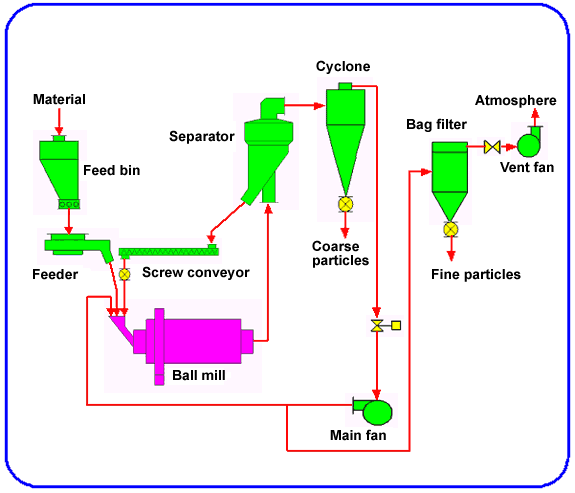
Division for this page Plant Engineering and Machinery Division


